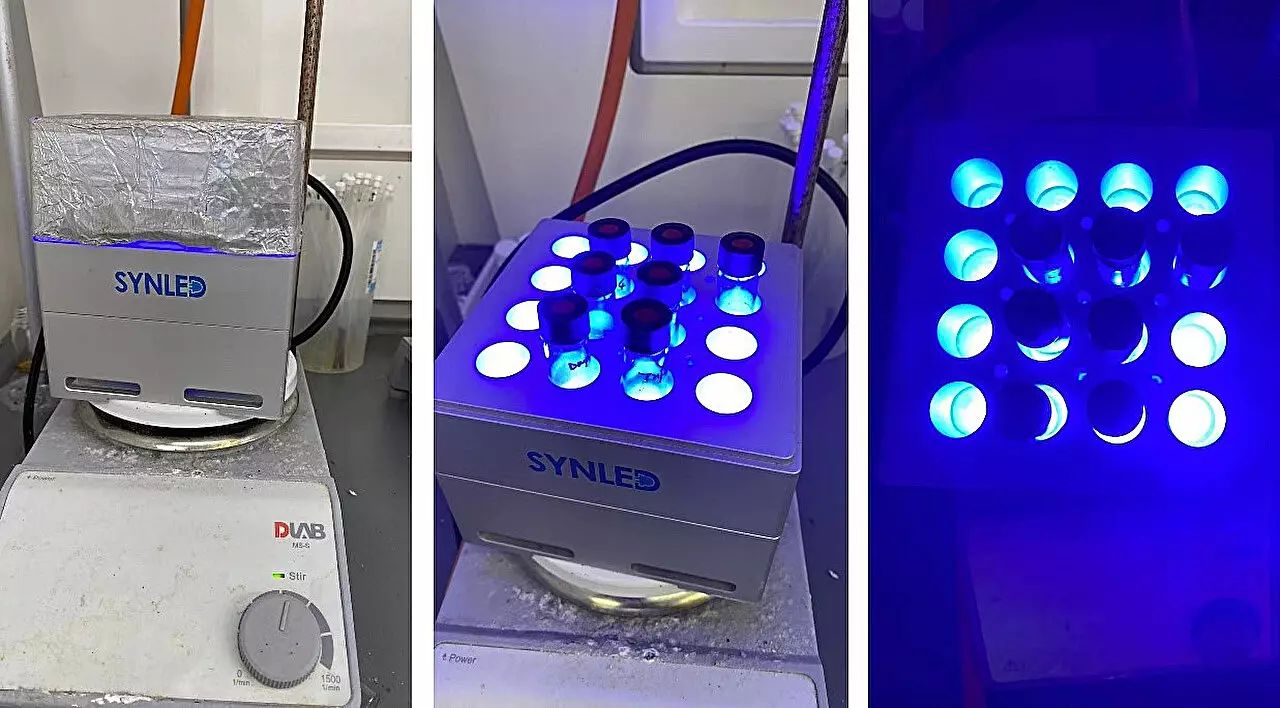A groundbreaking innovation from researchers at the National University of Singapore (NUS) is set to change the landscape of biochemical synthesis. Led by Associate Professor Koh Ming Joo, this pioneering team has developed a biomimetic method that transforms natural sugars into diverse glycosides and glycoproteins without the traditional need for protecting-group chemistry. Published in *Nature* on June 19, 2024, this research could prove transformative for sectors such as pharmaceuticals, cosmetic industries, and biotechnological applications, where carbohydrate synthesis plays a vital role.
In a world increasingly reliant on sustainable and efficient chemical processes, the significance of this development cannot be overstated. By leveraging enzymes’ natural abilities, particularly those of glycosyltransferases, the research team has ingeniously sidestepped the cumbersome steps typically associated with carbohydrate modification. This advancement promises to accelerate the synthesis process, providing a steadfast path toward complex biochemical constructs that were previously entangled in inefficiency.
The Traditional Challenges of Glycosylation
Historically, the synthesis of C-glycosyl compounds has been a formidable challenge. Traditional methodologies often involve multiple steps and extensive protecting-group strategies, resulting in not only a higher monetary cost but also considerable waste. The intricate nature of native sugars—each possessing multiple reactive hydroxyl groups—has rendered selective reaction processes complicated and inefficient. This is where the new approach stands in stark contrast.
As Associate Professor Koh aptly points out, “Many research groups, including ours, have endeavored tirelessly to conceive a protecting-group-free chemical glycosylation approach.” Despite concerted efforts, the quest for an efficient method lingered, plagued by practicality concerns and the necessity for high biocompatibility. The new strategy that they have birthed addresses these challenges head-on, marking a significant leap forward in glycochemistry.
Biomimetic Approach: Cap and Glycosylate
The innovative ‘cap and glycosylate’ methodology draws inspiration directly from biological processes. By mimicking nature, the researchers have designed a technique that preferentially activates the anomeric hydroxyl group of native sugars. This technique features a nucleophilic thiol that temporarily caps the sugar. The resulting intermediate undergoes a transformative, photoinduced glycosylation process, synthesizing glycosides more effectively than ever before. Such an approach eschews traditional, labor-intensive reactions, offering a streamlined path to glycosylation.
The implications of this method extend far beyond simple glycosylation. The research demonstrated its applicability in synthesizing various C-glycosyl, S-glycosyl, Se-glycosyl, and O-glycosyl compounds. The method stands not only as an efficient means for small molecules but sets the stage for complex biomolecule modifications—a leap that could inform future drug development and therapeutic interventions.
Breaking Ground in Protein Glycosylation
One of the most eye-catching aspects of this research is its focus on post-translational modification of proteins. Historically, chemically glycosylating proteins through direct functionalization of native sugars has been a challenging and largely uncharted territory. The exciting success of C-glycosylation on proteins of varied sizes illustrates the exceptional power and versatility of the ‘cap and glycosylate’ strategy.
Professor Davis’s insights emphasize the significant potential for manipulating biological molecules: “Carbon-centered radicals are wonderfully useful yet benign reactive intermediates.” By effectively harnessing these free glycosyl radicals from native sugars, researchers are able to catalyze biochemical reactions that parallel natural processes, thereby enhancing the efficiency of glycoside and glycoprotein synthesis.
The Broader Implications for Synthetic Chemistry
This advancement leads to a modernized landscape for carbohydrate and glycoconjugate synthesis, one devoid of the constraints imposed by protecting-groups. The ramifications of such a shift are profound; saving on costs, time, and labor can empower researchers to broaden their studies and applications in the realm of glycoscience.
Imagine researchers efficiently crafting sugar-based therapeutics or skincare ingredients without the usual hurdles of protecting-group chemistry. The benefits extend not just into the laboratory, but into practical applications that affect our daily lives. As the realization of this technology takes root in various industries, we may witness a new wave of products that leverage the unique capabilities of carbohydrates, marrying science to modern consumer needs in previously unimaginable ways.
With this significant breakthrough, the researchers at NUS are not just revolutionizing glycosylation; they are orchestrating a pivotal change in how we think about and utilize carbohydrates in both scientific and commercial arenas. The future of biomolecular synthesis is bright, and its potential is limitless.

